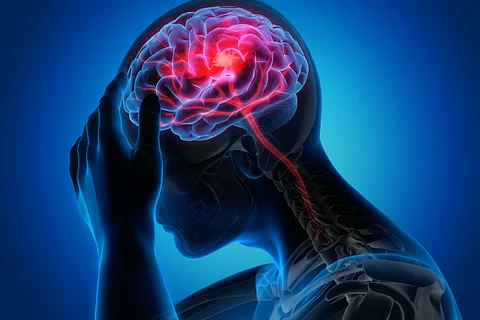

People who suffered strokes or related symptoms like mini-stroke or temporary vision loss had more than 50 times the amount of microplastic particles in a key artery in the neck compared to those without the condition, according to a new study.
Researchers examined plaque in the carotid arteries, the vessels in the neck responsible for supplying blood to the brain. Plaque, a build-up of fat, cholesterol and other substances on artery walls, can lead to serious cardiovascular conditions.
The paper was presented at the nonprofit American Heart Association’s Vascular Discovery 2025 Scientific Sessions, held from April 22-25, 2025 in Baltimore.
Micronanoplastics are tiny pieces of plastic created in industrial processes or from larger plastic objects as they degrade in the ocean or the soil and are mixture of micro and nano-sized particles. While microplastics are less than 5 millimetres in size, nanoplastics are microscopic (invisible to the naked eye), less than 1,000 nanometres across. For comparison, an average human hair is roughly 80,000-100,000 nanometres wide.
The alarmingly high levels of micro- and nano-particle in fatty buildups are very surprising, according to Karen L Furie, chair of neurology at the Warren Alpert Medical School of Brown University, Rhode Island.
“Up until this point, we have known that plaque components include elements of fat, calcium, fibrous tissue, inflammatory elements in the blood, but we did not know that micronanoparticles of plastic might be associated with atheromas [plaques],” Furie commented in a video published by the American Heart Association.
The study was led by Ross Clark, a vascular surgeon-scientist at the University of New Mexico in Albuquerque. He initiated the investigation after reviewing recent reports that identified microplastics in the carotid plaques of individuals with no symptoms, which were linked to poorer clinical outcomes, including higher risks of stroke, heart attack and death.
“Our questions cantered on the possible association of clinical carotid artery stenosis [when blood vessels narrows and blood cannot flow normally] symptoms with microplastics level as well as attempting to elucidate possible mechanisms,” Clark told Down To Earth.
Clark and his team examined 50 participants, dividing them into three groups: those with healthy arteries, those with asymptomatic plaque and those who had experienced symptoms due to plaque build-up. They compared the levels of micronanoplastics in carotid artery samples from each group.
The results revealed stark differences: Asymptomatic patients had plaques containing 16 times more microplastic particles in the fatty deposits than tissues from deceased donors without plaque. In symptomatic patients, the levels were 51 times higher.
The team also investigated whether these plastic particle levels influenced inflammation or the gene activity of macrophages (immune cells) and stem cells that help stabilise plaque. Stem cells are special; they can regenerate and develop into many different cell types in the body during early life and growth.
The researchers found a decrease in the anti-inflammatory gene, CD163, in macrophages in the carotid plaques when plastics content was high. “What it means holistically is still under investigation but there is a suggestion that immune cells may behave differently in these lesions [plaques] as compared to low plastics,” Ross said.
While there was no evidence of sudden inflammation linked to micronanoplastics levels, researchers observed reduced activity in genes responsible for suppressing inflammation.
These results indicate that the biological effects of micronanoplastics on arterial plaques may be more complex and nuanced than a straightforward inflammatory response, said Clark, stressing on the need for more research.
“We do not yet know what explains the results which indicate that carotid artery plaques from those with clinical symptoms have over 50-fold more microplastics when compared to normal, non-diseased arteries,” he said.
Clark cautioned that the research does not prove that micronanoplastics in plaque caused the symptoms of carotid artery disease— it could not confirm whether the plastics directly contributed to plaque instability or were simply markers of another underlying biological process, accounting for different clinical behaviour.
The study suffered from another limitation: The method used to detect micronanoplastics could not reliably distinguish between plastic particles and degraded fatty acids within plaque samples. Clark’s team is working to refine this technique to prevent interference from lipids.
“Now that we are aware of the presence of these materials in atherosclerotic plaques, the next steps will be to investigate what exactly they are doing there (if anything),” the expert added.